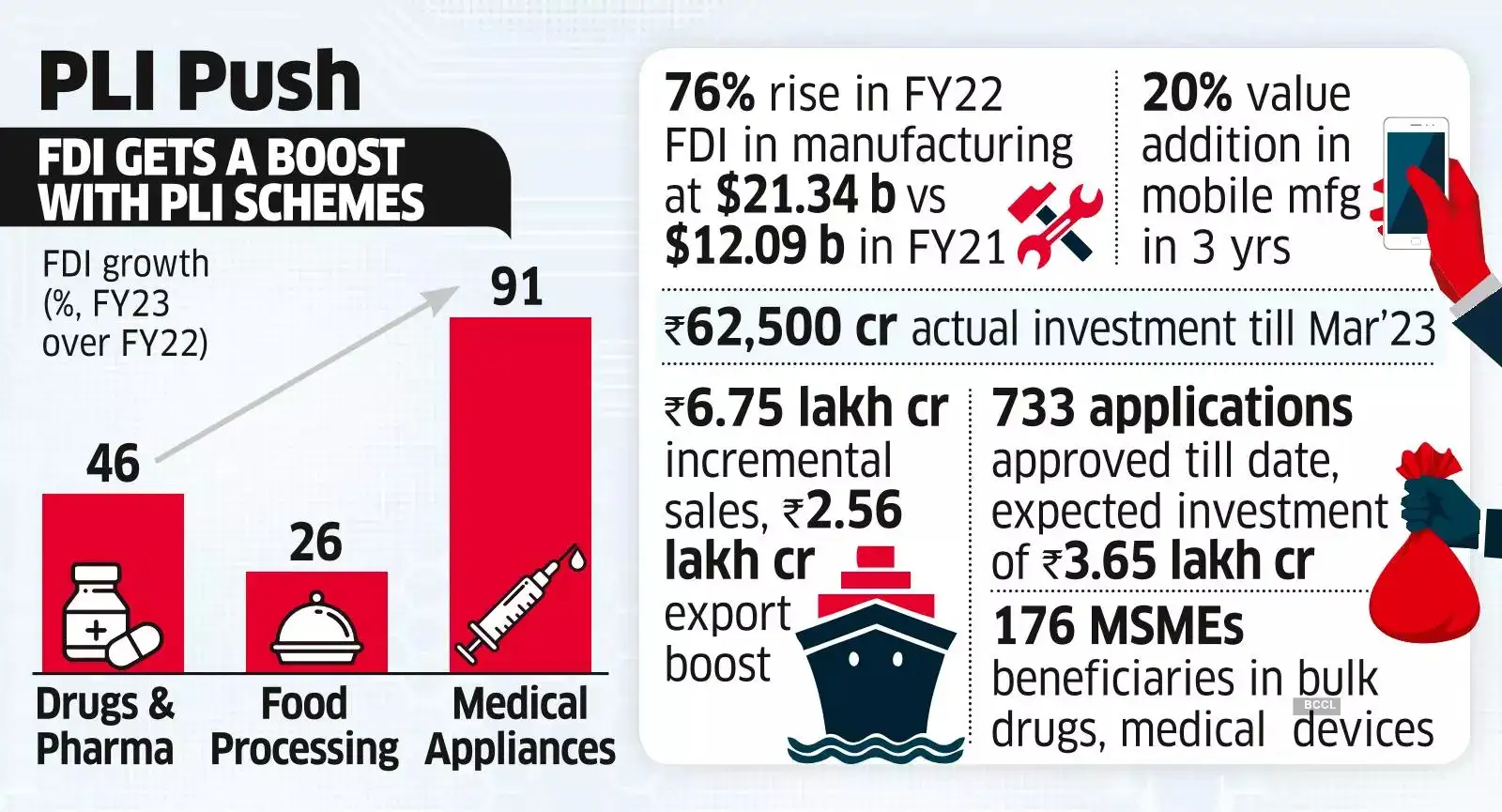Department for Promotion of Industry and Internal Trade (DPIIT) secretary Rajesh Kumar Singh said the respective ministries have to see if PLI disbursement is low or if firms are not able to meet their performance thresholds. In such cases, sometimes relaxations may be required like the way it has been done for the IT sector, he said.
“We are hopeful of utilising ₹1.97 lakh crore for the scheme … but in an individual scheme, there may be some course correction,” Singh said.
Last month, the government announced the PLI 2.0 for IT hardware with an outlay of ₹17,000 crore.

While the government has announced the PLI scheme for 14 sectors, such as telecommunication, white goods, textiles and pharma, with an outlay of ₹1.97 lakh crore, it has disbursed only ₹2,900 crore till March 2023 out of ₹3,400 crore of claims received.
Commerce and industry minister Piyush Goyal will later this month hold a review and feedback meeting with the participants of all 14 ministries involved in the PLI scheme.
“In eight sectors, we are disbursing the incentives and in the remaining six, we are hopeful (to start the disbursements). This year and next year, we will be on track,” said DPIIT additional secretary Rajeev Singh Thakur, on the reason for low disbursals. The next two years would be crucial, Thakur added.
The government is “not too concerned” about the lag in the incentives as investments are happening, Singh said.
“We expect the disbursement to pick up … Projects are on the ground and investments and employment are happening. The disbursement will follow … But yes, there is a lag,” he added.
Large-scale electronics manufacturing, pharma, food processing, telecom, white goods, auto and auto components are the eight sectors where the PLI performance is healthy. High-efficiency solar PV modules, advanced chemistry cell batteries, textile products and specialty steel are the areas where the pickup is slow.
Toys, leather and footwear, and components for new age bicycles such as e-bikes, are at advanced stages, Singh said.
PLI benefits
One achievement of the PLI is that Apple and its vendors have come to India, Singh said, adding: “We are trying to build a similar local ecosystem for other sectors.”
As per the DPIIT, import substitution of 60% in the telecom sector and a “significant reduction” in imports of raw materials in the pharma sector have been achieved. The drone sector has seen a seven-times jump in turnover.
In the 14 sectors getting the PLI benefits, the government has received 733 applications as of March this year. As many as 325,000 jobs have been generated in these sectors and goods worth Rs 2.6 lakh crore have been exported till 2022-23.
Thakur said that in electronics and mobile manufacturing, the value addition has been increased to 23% and 20%, respectively, which was negligible in 2014-15.
In China, the value addition is about 49% and in Vietnam, it is 18%.
As per the department, mobile phone export from India increased to Rs 90,000 crore during April-December FY23 as against Rs 45,000 crore in 2021-22.
Out of the total mobile phone exports during 2022-23, 82% were by PLI beneficiaries.








